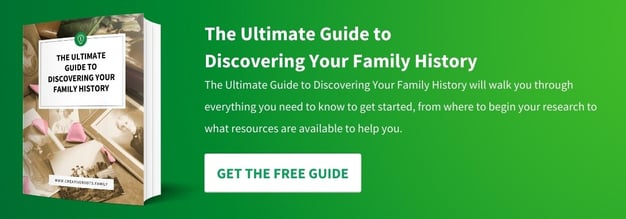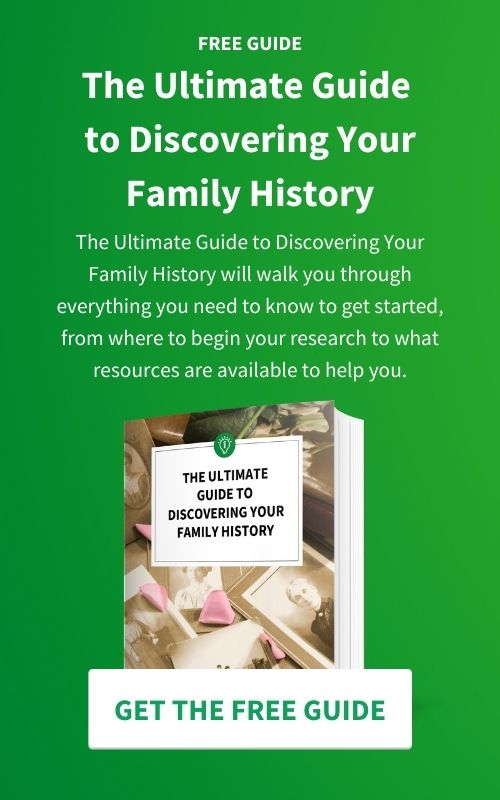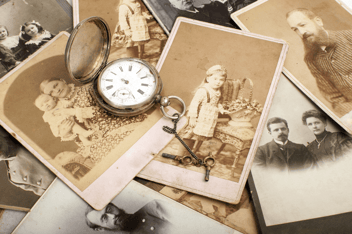How to Use DNA in Genealogical Research
Are you interested in using DNA in your genealogical research but don't know where to start? DNA can be a helpful tool in your research, but it's important to understand how it works and what it can and can't tell you before you get started.
DNA is a very complex topic. In this article, we will briefly touch on how to use DNA in genealogical research. We'll talk about what DNA can and can't tell you, how you might interpret DNA test results, and how to use DNA in conjunction with other research methods. By the end of this article, you should have a better understanding of how DNA testing can enhance your own research.
What is DNA?
Deoxyribonucleic acid, or DNA, is the hereditary material in humans and almost all other organisms. Nearly every cell in a person’s body has the same DNA. Most DNA is located in the cell nucleus (as chromatin) but a small amount of it can also be found in the mitochondria.
DNA codes for all proteins produced by an organism which carry out its functions - this includes enzymes, hormones and structural proteins. It consists of two long chains that coil around each other to form a double helix carrying genetic instructions; these are referred to as genes. The order of these nitrogen bases (adenine, thymine, cytosine and guanine) determines what information is stored at that location on the chain - similar to how letters of the alphabet appear in a particular order to spell out words and sentences.
How can DNA be used in genealogical research?
There are many ways that DNA can be used in genealogical research. One way is to take a DNA test. This will give you information about your ancestors and where they came from. You can also use DNA to find out if you have any genetic diseases or conditions. Another way to use DNA is to match it with other people who have tested their DNA. This can help you find relatives that you didn't know you had, and learn more about your family history.
What are the benefits of using DNA in genealogical research?
There are many benefits of using DNA in genealogical research. First, it can help you confirm or disprove relationships between people. Second, it can provide information about your ancestors that you would not be able to find otherwise. Finally, it can help you connect with distant relatives who share your DNA.
If you are looking to confirm or disprove a relationship with someone, then a DNA test is the best way to do this. You can take a test through one of the major companies such as 23andMe or AncestryDNA. Once you have taken the test and received your results back, you will be able to see how closely related you are to the other person based on percentiles. If two people share less than 10% of their DNA, they are not likely related; if they share more than 50% of their DNA, they are very likely related. However, even if two people only share a small amount of DNA (e..g., 20%), there is still a chance that they could be distantly related since everyone has some degree of genetic variation. Therefore, taking a DNA test is the most definitive way to determine whether or not somebody else is really your relative.
In addition to providing information about confirming or disproving familial relationships, DNA testing can also give you insights into your family history you wouldn't ordinarily have to. For example, you may learn things that make you uncomfortable, or what medical conditions may your family has experienced. In some cases, you may be able to connect with distant relatives who share your DNA. This is a great way to learn more about where you come from and expand your family tree.
What are the limitations of using DNA in genealogical research?
There are a few limitations to using DNA in genealogical research. First, it can be expensive to have your DNA tested. Second, not everyone has had their DNA tested, so you may not be able to find information about all of your ancestors this way. Finally, DNA testing can only tell you so much about a person – it cannot give you detailed information about someone’s life or personality.
How to get started with DNA and genealogical research
There are a few ways to get started with DNA and genealogical research. One way is to take a DNA test. There are many different companies offering DNA testing. Although you may be able to upload your results to other sites be aware, each company may test for different strands of the DNA. Do your research to ensure you are getting the one you want based on the results they provide.
Another way to get started is by looking through family records and documents. This can be done at local libraries or online. Finally, another option is to talk to relatives who may know more about the family history.
Conclusion
As we all know, DNA is a powerful tool that can be used for a variety of purposes, including genealogical research. While it may seem daunting at first, using DNA in your genealogical research can be a great way to uncover new information about your family tree. There are a few different ways you can use DNA in your research. One way is to take the test, but be aware there are many different companies offering them and each has its own strengths and weaknesses. You can also use public databases, like GEDCOM, to find people who have already taken DNA tests and are willing to share their results. Another way to use DNA in your research is to use it to verify the information you already have. For example, you might have a family tradition that you are related to a certain famous person. You can use DNA to see if there is any truth to that claim. Ultimately, using DNA in your genealogical research can be a great way to uncover new information about your family. It can also help you verify the information you already have. So, if you’re looking to take your research to the next level, consider using DNA.
To explore more insights on preserving family history, check out these related blogs.


Article by Carol Walsh
Carol Walsh is the CEO of Creative Roots, a professional genealogy company. She has a passion for preserving family history and storytelling. Carol's research methodology centers around fact-finding and publishing in a format that readers can use to preserve the stories. Her ultimate goal is to help families connect with their past and each other.





